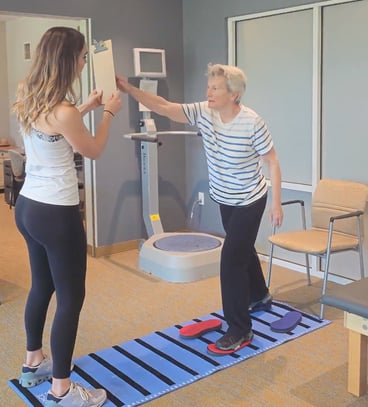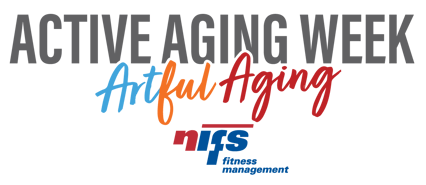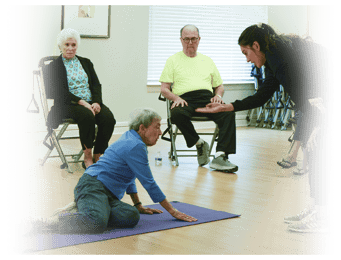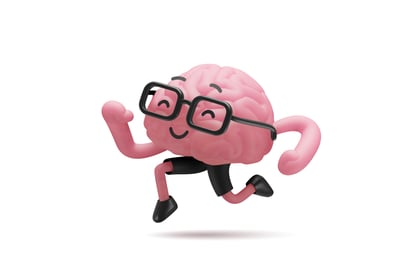 I had an opportunity to speak as a panelist at the Senior Housing News BUILD conference in Orlando, Florida. The panel was hosted by our good friends at NuStep who have similarly been supporting fitness in the senior living space for decades with some of our favorite equipment. Those in attendance were architects, developers, and designers looking to the future with both renovations and new construction. The panel was on one of my favorite topics – the business case for quality fitness programs in senior living communities. The audience very well could have been marketing and operations executives as the discussion equally applied to all visionaries in the senior living landscape who recognize the demands of their consumers…finding a community that can help them live well.
I had an opportunity to speak as a panelist at the Senior Housing News BUILD conference in Orlando, Florida. The panel was hosted by our good friends at NuStep who have similarly been supporting fitness in the senior living space for decades with some of our favorite equipment. Those in attendance were architects, developers, and designers looking to the future with both renovations and new construction. The panel was on one of my favorite topics – the business case for quality fitness programs in senior living communities. The audience very well could have been marketing and operations executives as the discussion equally applied to all visionaries in the senior living landscape who recognize the demands of their consumers…finding a community that can help them live well.
The design of your fitness amenities 100% matters. Choosing the right equipment is crucial for the safety and success of your residents and there were great insights shared.
These are just a few of the questions posed by the audience and moderator:
- How do you get started in a fitness center design project?
- How do you choose equipment that meets the needs of current residents while appealing to future consumers?
- How can you enhance your fitness center when financing is a challenge for renovations or new construction?
- How are you seeing lifeplan communities support resident wellness through the continuums of care?
Time and time again, our expert moderator Tim Mullaney would ask a question of myself, and co-panelist Annie Shaffer from Sunnyside Retirement Community and we found ourselves speaking to quality staffing being a significant part of the solution to these questions. Do you want to check the box that you have a fitness center or do you want your residents and prospects to feel the energy in a fitness program that is a hub of activity and heartbeat of your community?
When we spoke to getting started with a design project, we began with defining your vision. You wouldn’t open a new dining venue without a vision for the resident experience in that space. What food would be on the menu? What level of hospitality and service would residents experience in that space to keep them highly satisfied? The same is true for the fitness center and a calendar of group fitness classes is not enough. Defining your vision and designing a space around the desired resident experience is a significant piece of the solution to these questions noted above and you need quality fitness staff to evolve your program with resident input and preferences.
What is your community’s vision and how are your showcasing it to create distinction in your marketplace? Don’t go at it alone. Make sure you find a partner who is experienced in developing quality fitness programs and not just selling you equipment. You need that operator perspective to design not only the space, but a program that truly serves your residents.
Learn how NIFS expertise generates a 63% increase in resident engagement in our client fitness centers.

 Every senior living community offers group fitness classes. If you want to stand out from the competition, you have to offer more.
Every senior living community offers group fitness classes. If you want to stand out from the competition, you have to offer more.
.jpg?width=365&height=243&name=GettyImages-1778515577%20(1).jpg) As the festive season draws near, the anticipation of joy, celebration, and connection fills the air. Yet, for many of us committed to maintaining a healthy lifestyle, the holidays can also bring a sense of unease. The abundance of indulgent feasts, tempting treats, and busy schedules can pose challenges to our well-established routines.
As the festive season draws near, the anticipation of joy, celebration, and connection fills the air. Yet, for many of us committed to maintaining a healthy lifestyle, the holidays can also bring a sense of unease. The abundance of indulgent feasts, tempting treats, and busy schedules can pose challenges to our well-established routines. As the seasons change and leaves take on vibrant hues of red, yellow, and orange we are reminded that much like an artist, we can craft our lives in beautiful ways, and what better time to celebrate that reminder with our senior residents than during Active Aging Week? Active Aging Week, celebrated annually, shines a light on the importance of maintaining an active and engaged lifestyle as we age. This year, at NIFS, we’ve decided to focus on “aging artfully” and help the residents in the communities that we partner with age well through embracing their creativity.
As the seasons change and leaves take on vibrant hues of red, yellow, and orange we are reminded that much like an artist, we can craft our lives in beautiful ways, and what better time to celebrate that reminder with our senior residents than during Active Aging Week? Active Aging Week, celebrated annually, shines a light on the importance of maintaining an active and engaged lifestyle as we age. This year, at NIFS, we’ve decided to focus on “aging artfully” and help the residents in the communities that we partner with age well through embracing their creativity.
.jpg?width=413&height=246&name=GettyImages-1392938623%20(1).jpg) Striving to achieve 10,000 steps a day is a great way to move your body more and improve your overall health. Don't let the thought of 10,000 steps hinder you from trying. Start small and work your way to 10K a day this month!
Striving to achieve 10,000 steps a day is a great way to move your body more and improve your overall health. Don't let the thought of 10,000 steps hinder you from trying. Start small and work your way to 10K a day this month!
.jpg?width=458&height=305&name=GettyImages-805085582%20(1).jpg) What Makes Cycle So Great?
What Makes Cycle So Great?.jpg?width=461&height=307&name=GettyImages-1432465103%20(1).jpg)
 There are several health-related observances through the year and NIFS staff enjoy finding ways to use these to bring attention to important topics. One of those is Falls Prevention Week in September. As a fitness management provider for senior living communities, fall prevention is a hot topic so older adults can live vibrantly for as long as possible. But you might be wondering how can you make something that doesn’t sound so fun be engaging for residents? We have found that there is a love/hate relationship everyone has with any program labeled “Fall Prevention” because residents are certainly interested in learning about how to prevent falls but have a healthy fear of falling. What better way to face a fear than head on and in a practical way, right?
There are several health-related observances through the year and NIFS staff enjoy finding ways to use these to bring attention to important topics. One of those is Falls Prevention Week in September. As a fitness management provider for senior living communities, fall prevention is a hot topic so older adults can live vibrantly for as long as possible. But you might be wondering how can you make something that doesn’t sound so fun be engaging for residents? We have found that there is a love/hate relationship everyone has with any program labeled “Fall Prevention” because residents are certainly interested in learning about how to prevent falls but have a healthy fear of falling. What better way to face a fear than head on and in a practical way, right?
.jpg?width=477&height=318&name=GettyImages-1143018176%20(1).jpg) It isn’t a secret that as a person ages, there is an increased risk of falling. While there are a few different reasons this risk can increase, we will focus on what impacts a person’s ability to
It isn’t a secret that as a person ages, there is an increased risk of falling. While there are a few different reasons this risk can increase, we will focus on what impacts a person’s ability to  THE BRAIN: the most important organ in our body, is often the most forgotten when we think of training. Why does the brain always seem to slip through the cracks? We can’t stop talking about BMI, body fat percentage, heart rate reserve, and all these other buzz words in the fitness industry. Now you’re probably thinking “but isn’t exercise good for the brain?” and you’d be right but there is more to it than that. We aren’t specifically targeting our brain, we’re focused on our muscles, our heart and the brain is just getting a splash of the love it deserves. That’s something I’d like to change! And we can do that in the gym and at home.
THE BRAIN: the most important organ in our body, is often the most forgotten when we think of training. Why does the brain always seem to slip through the cracks? We can’t stop talking about BMI, body fat percentage, heart rate reserve, and all these other buzz words in the fitness industry. Now you’re probably thinking “but isn’t exercise good for the brain?” and you’d be right but there is more to it than that. We aren’t specifically targeting our brain, we’re focused on our muscles, our heart and the brain is just getting a splash of the love it deserves. That’s something I’d like to change! And we can do that in the gym and at home.